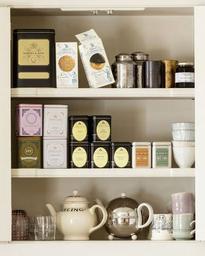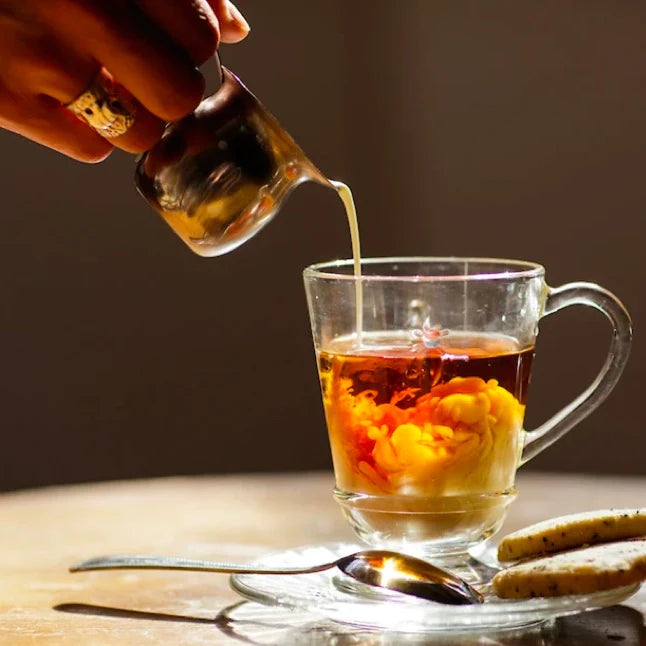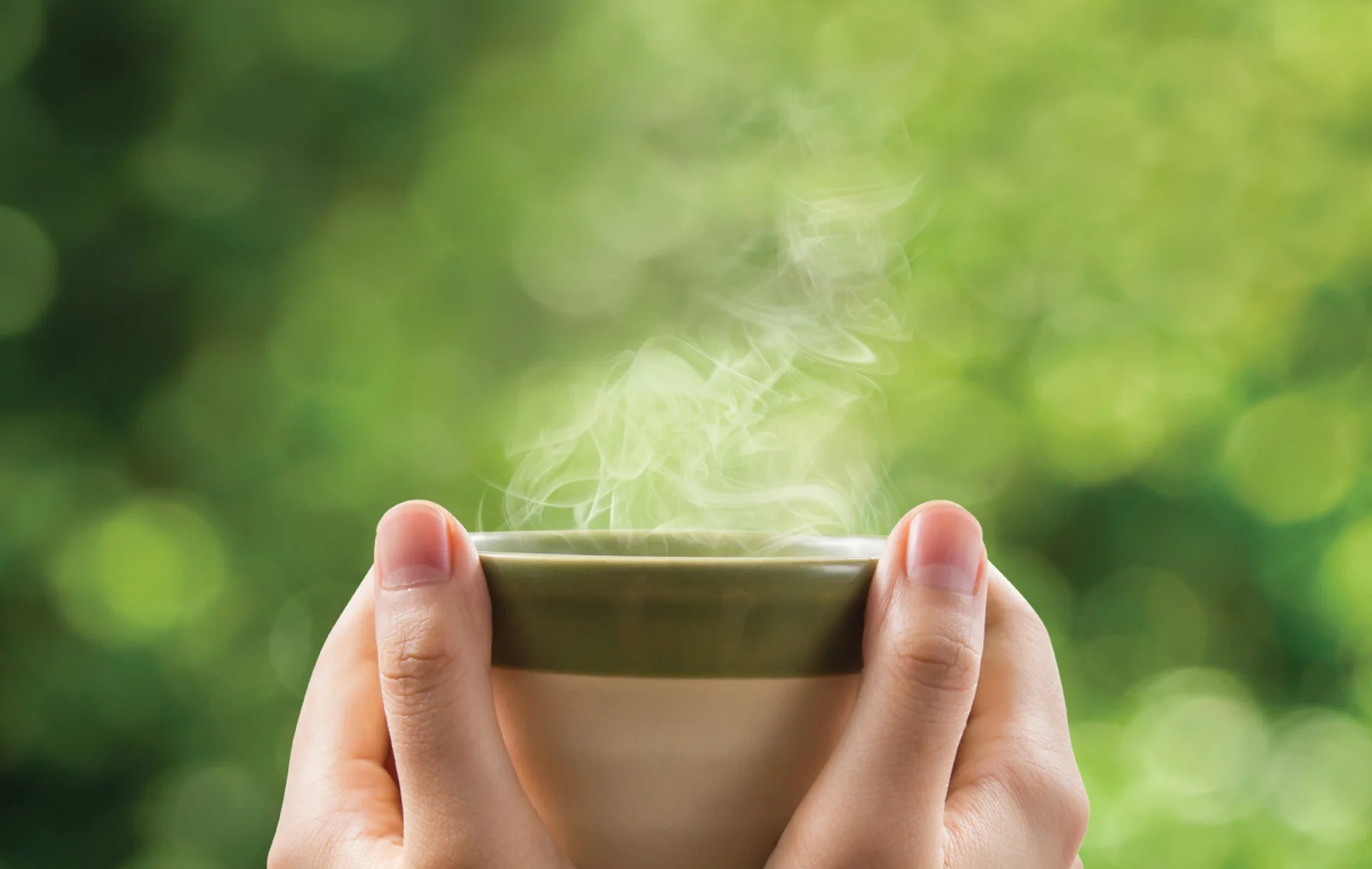Discover the World of Tea

Tea is an infusion made from the dried leaves of a flowering evergreen plant camellia sinensis. Originally native to Eastern and Southern Asia, it is now grown successfully in Africa and South America. Of the four major types of teas, green is primarily from Japan, oolong, mainly from Formosa, black, primarily from Sri Lanka and India, and black scented teas.

In general, each estate and garden uses a single style of processing determined by its elevation, moisture, and farming practices. Tea likes it steamy, growing fastest from sea level to 6,500 feet in hot temperatures with 80 to 150 inches of annual rain, high humidity and fog. At higher elevations or in shade, it grows more slowly. This climatic change also produces a more intensely flavored tea, like that of a Darjeeling.

Harney & Sons’ remarkable array of teas are sourced from the finest tea gardens around the world and include pure teas, and blends, like English Breakfast, usually a mix of Indian and Chinese black teas. In addition, there are flavored teas, these have become enormously popular in recent years and are a specialty of Harney & Sons. This is, however, just the beginning of what there is to know about tea.
Making the Best Cup of Tea of Your Life
There is an art to making a perfect, delicious cup or pot of tea. Exploring the joys of tea takes a little effort, but is oh, so, rewarding. A superb brew of tea relies on four essential elements
How You Like Your Tea
Harney & Sons tea can be enjoyed in three different ways using loose tea, teabags or silken sachets. Get to know the different ways to enjoy our tea. As you discover our teas you’ll notice a Tea Rating system developed by Mike Harney to rate our tea. It’s a way to know how a tea will taste in your mouth.
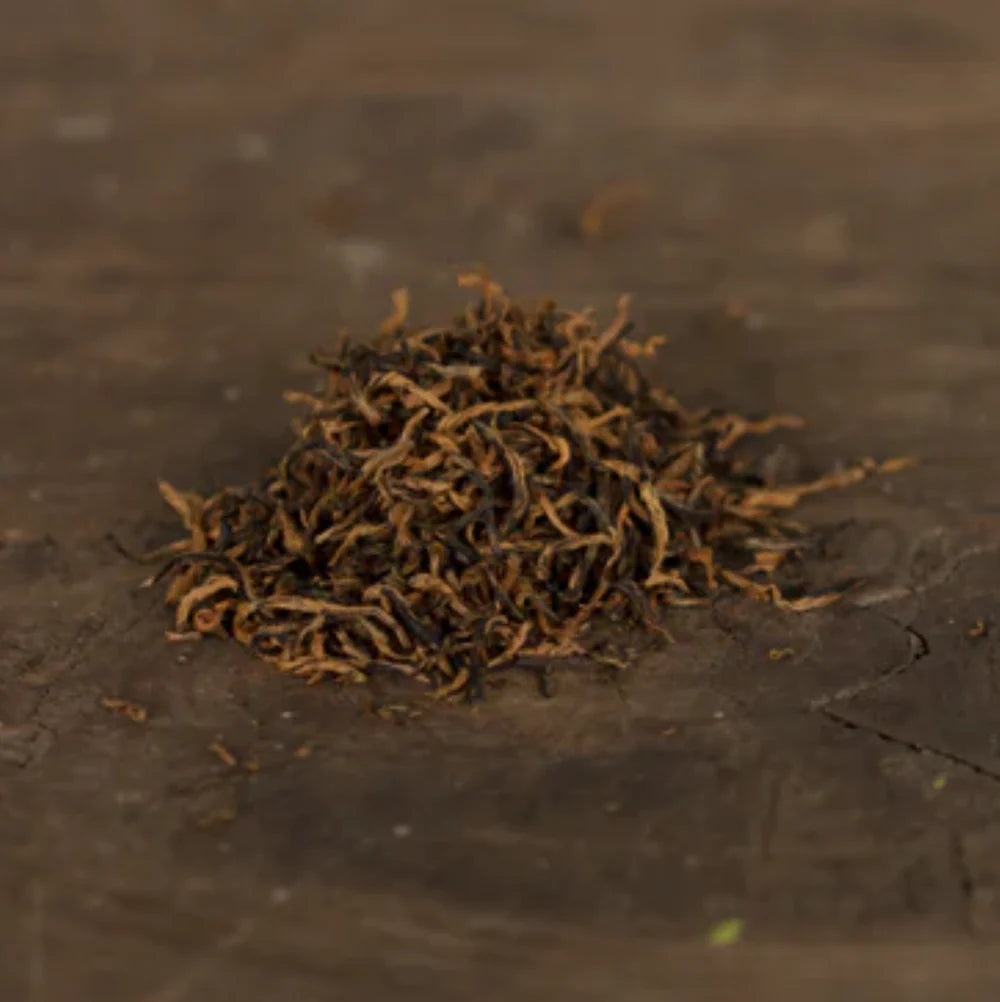
Loose Tea
Connoisseurs almost always choose loose tea, because it makes the ultimate cup of tea. When leaves are smaller, the flavor is more brisk. Large leaf black teas are more mellow and complex. You can choose to buy your loose tea in a decorative, gift-worthy Harney Tin, or save with a full Harney Pound bag and refill your tins when you like.
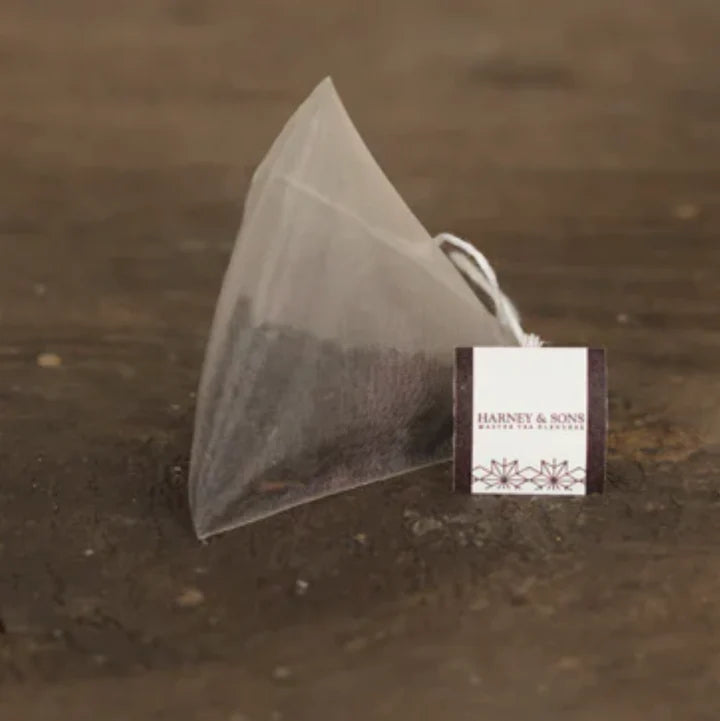
Silken Sachets
A large variety of distinctive Harney & Sons teas and herbals come in our perfect pyramid sachets. The shape allows for full leaves and improved water flow, resulting in a very nice cup of tea. The quantity is measured for you and there’s no straining required. Many Harney tea sachets can be purchased as Harney 50s – extra value for 50 count sachets.

Tea Bags
Harney teabags are good for brewing tea on the fly. Each bag provides the ideal quantity for a mug and the broken leaves infuse faster than loose tea. Teabags travel well and mean you can have a comforting cup wherever you go. Check and see if your favorite tea comes with bulk savings in Harney 50s - 50 count teabags for less.

If You Like Our Tea
Bulk Savings Give You More to Love
You may already have some favorite teas, but why stick with just a few? Harney & Sons sells teas in many sizes so you can explore different kinds of tea and discover unique tastes and flavorings.
Then, once you have a good idea of teas you’re going to enjoy again and again, check to see if they are available in bulk at a lower price. Harney 50s contain 50 Harney silken sachets or 50 Harney teabags. Harney Pounds contain one pound of Harney loose tea.
You can refill your tins – and your cupboard – and take advantage of the good value. You can buy more Harney tea for less. What a bright idea!
Mike’s Tea Ratings
Michael Harney rates many of our teas on three attributes. A rating of 0 indicates the tea has none of the particular characteristic and a rating of 5 indicates that it is a primary characteristic.
Briskness 0-5
Refers to a tea's ability to make your mouth pucker, also known as astringency. Some astringency makes tea brisk & desirable (like white wine). Too much briskness can be a problem, but may be controlled by reducing the brewing time.
Body 0-5
Refers to whether or not a tea feels thick in the mouth such as Assam or light such as a white tea. Sometimes this body comes from dissolved solids from the leaves like the Assam, and sometimes it is from all the amino acids like Ichiban Sencha.
Aroma 0-5
Refers to whether or not the tea has a pleasant smell, often the most prized part of tea. That makes sense, since humans can smell much better than we can taste. Sometimes the pleasant smell is teased out of the tea leaf by a skilled tea maker, sometimes it is flavor blended in here by our blenders.
Tea FAQs
It is fresh air, oxygen to be specific, which robs the flavor from loose-leaf teas. Store the teas in an airtight container away from moisture and direct sunlight. Don't store Harney & Sons teas in the refrigerator or freezer. The cooler temperatures will not preserve freshness of tea, and moisture and odors from the refrigerator or freezer will give your tea an unpleasant taste.
No ,fine tea should not be kept in the freezer. There are strong aromas and moisture in your freezer. Tea should be stored in a closed container, out of the light. Remember that tea is a blotter and will absorb strong smells!
No, Harney and Sons tea does not have an expiration date. We do put lot numbers on our tea for production and also suggested “best by dates.” We recommend the product be consumed within two years of that date, simply to ensure the best flavor. Of course, we guarantee all of our products, and if you are unhappy with a Harney & Sons product, please let us know.
It is quite difficult to gauge how much caffeine is in a cup of tea, because it depends on so many factors: the tea itself, how much is used in a cup, and how long it is brewed. But the general rule is a cup of green tea contains about one-third as much caffeine as a cup of coffee, 40-60 mg per cup.
Harney & Sons tea sachets are pyramid-shaped silky nylon bags that are filled with whole-leaf loose tea. The benefit of the pyramid shape is to allow the tea leaves to expand fully, thus allowing the full tea taste to develop.
Harney & Sons is an American tea company but one which has found favor with tea lovers around the world, including the United Kingdom. We have developed blends that are beloved by those of the British persuasion including an English Breakfast Tea, which is 100% Keemun (the original English Breakfast blend). We have also honored other British isles with our Irish Breakfast Tea and Scottish Morn and Scottish Afternoon robust blends. Harney teas are used in one of London's finest hotels: The Dorchester, and we created a unique line of teas for the Historic Royal Palaces in England.
Decaffeinated tea is tea from which the caffeine has been removed, through one of two possible decaffeination processes. Herbal tea, on the other hand, is not really tea at all, but is herbs brewed in the same way that tea is brewed. Herbals, sometimes referred to as tisanes, never had any caffeine to begin with.
Oolong tea is sometimes referred to as Brown Tea, halfway between a black and green tea. In many respects it is the most complicated tea to make, because the tea is only partially oxidized. That is like keeping a banana perfectly ripe when nature wants to keep moving it toward being overripe. However the reward for all that hard work is tea with great body, and the most intense, varied aroma and flavors.
All teas originate from the same species, the Camelia Sinensis. To make green tea, the fresh tea is briefly cooked using either steam or dry heat. This process fixes the green colors and fresh flavors. Black tea leaves are left outside and become limp (withered), then put into machines that roll the leaves and damage them. The damaged leaves change color to brown, then black. This natural process is called oxidation and is similar to the ripening of a banana (from yellow to brown and finally becoming black.) After all the tea is dried, it can be shipped great distances. The oxidation process changes the flavor of the tea (now black) and gives it more body.
We all know of the terrible tragedy that happened in Fukushima in 2011. At that time there was evidence that some of the radiation drifted over Tokyo and even went as far as the northern limits of Japan's Shizuoka tea growing area. At that time, the Japanese and US governments set up radiation tests on tea. We also did tests on teas that arrived from south of the affected area. Our tests did not detect any radiation in 2011.
In 2012, testing continued by the Japanese government. None was detected. The type of radiation that was spread rapidly degrades.
Since 2013, testing has been relaxed. However, recently there has been notice about the radiation leaking from ruined plant. Combined with the lives that have been forever altered by the nuclear explosion, this is a continuing tragedy. However, unless there is another explosion, and radiation drifts over the tea growing area, tea is not affected.
If you feel that you would like to be sure, Mike Harney counsels to choose teas from the Uji area, which is several hundred miles south. There was never any radiation detected there. That would be Matsuda's, Organic Sencha, Yanagi, and Gyokuro. Also the most southern area of Japan: Kagoshima was very far south.
We do test our large tea purchases for pesticide residues and they do not exceed the stringent EU limits. We do offer certified organic teas that are certified organic under the USDA’s National Organic Program. That means that the growers do not use banned pesticides or artificial fertilizers on the plants. Just to be sure, we test them too. This program is designed to insure that there are not any pesticide problem.
One does not find GMOs in tea, Genetically modified organisms are found mostly on big cash crops like corn or soy. We will be registering as a GMO free organization later this year.
Harney & Sons Fine Teas do offer a wide variety of teas: some have no flavors added, some use natural flavors, and a few are a blend of natural and artificial flavors. Since there is no evidence that these blended flavors pose a risk, we have no problem using them. We do understand that some people like to avoid them, so that is why we offer a wide variety of teas only containing natural flavors (or unflavored teas).

